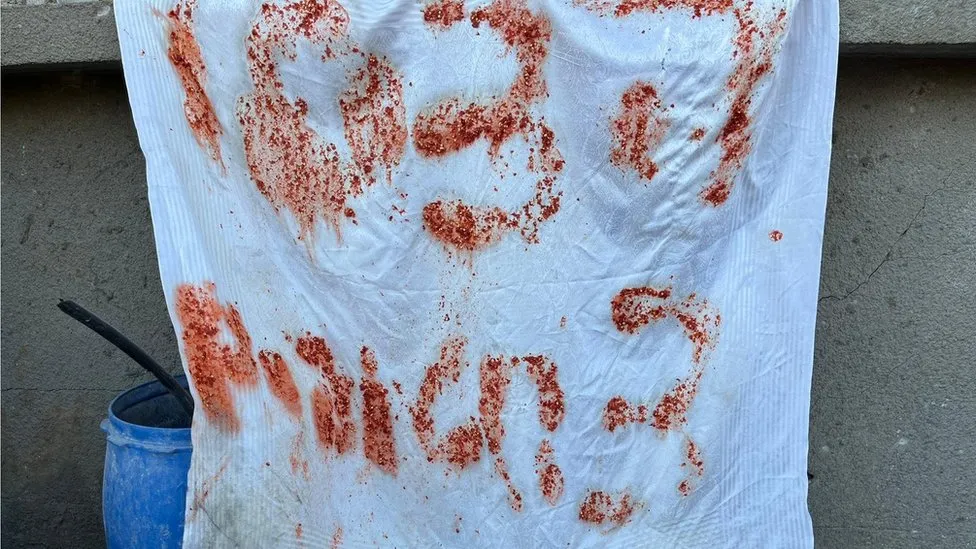Three Israeli hostages mistakenly killed by soldiers in Gaza on Friday had used leftover food to write signs pleading for help, Israel says.
The men had been staying at the building next to where they were shot “for some period of time”, according to the Israel Defense Forces (IDF). Meanwhile the Hamas-run Gaza health ministry says Israeli air strikes killed at least 90 people in the Jabalia refugee camp on Sunday.
The BBC was unable to confirm the toll.
The strikes hit a residential block housing two families, the ministry said. About 120 hostages are believed to be still in captivity in the Gaza Strip, held by Hamas and allied Palestinian groups.
Israel is under increasing pressure for a deal to free more hostages. Israeli officials have admitted that killing the three men who were holding a white flag was a breach of “rules of engagement”.
They were seized and taken to Gaza during the 7 October Hamas attacks that killed around 1,200 in southern Israel. Israel has launched a massive retaliatory operation it says is aimed at destroying Hamas.
More than 18,000 people have been killed in Gaza since, according to the local health authorities, with hundreds of thousands of others pushed out of their homes. The Israeli hostages – Yotam Haim, 28, Samer Talalka, 22, and Alon Shamriz, 26 – were killed in the Shejaiya neighbourhood of Gaza City on Friday as Israeli troops face stiff resistance.

According to an Israeli military official, who spoke on condition of anonymity, the men emerged shirtless from a building, with one carrying a stick with a white cloth.
One of the soldiers, the official added, felt threatened, as the men were at a distance of tens of metres, declared them “terrorists” and opened fire. Two were immediately killed while the third, wounded, returned to the building.
A cry for help was heard in Hebrew and the battalion commander ordered the troops to cease fire. The wounded hostage later re-emerged, and was shot and killed, the official said.
It is not clear if the hostages had been abandoned by their captors or escaped. On Sunday, the IDF said a search of the building was carried out, revealing the messages “SOS” and “Help, 3 hostages” written on fabric.
Officials believe the hostages had been there for some time.
Since the end of a temporary ceasefire between Israel and Hamas earlier this month, families of the hostages have urged the Israeli government to reach a new truce for at least some of the captives to be freed. The initial deal led to the release of more than 100 hostages, in exchange for Palestinians held in Israeli jails.
Prime Minister Benjamin Netanyahu has deflected the calls, insisting “military pressure is necessary both for the return of the hostages and for victory”. Amid mounting Palestinian civilian casualties, Israeli authorities have come under growing international pressure, including from the country's main ally, the US.
On Sunday, France's Foreign Minister Catherine Colonna went to Israel calling for an “immediate and durable truce”.
Her Israeli counterpart Eli Cohen said a ceasefire would be an error, describing it as a gift to Hamas. The UK and Germany have also called for a “sustainable ceasefire”, whilst stopping short of saying it should be immediate.
Vast areas of the Gaza Strip have been destroyed by the Israeli bombardment, and the United Nations has warned of a humanitarian catastrophe amid widespread shortages of basic supplies. Images on social media on Sunday showed Gaza residents climbing on aid lorries.
With no let-up in the fighting, the IDF published images of what it said was Hamas's largest attack tunnel so far.
The tunnel – in some places wide enough for cars to pass through – was some 400m from the Erez border crossing with Israel, the IDF said.
— CutC by bbc.com


